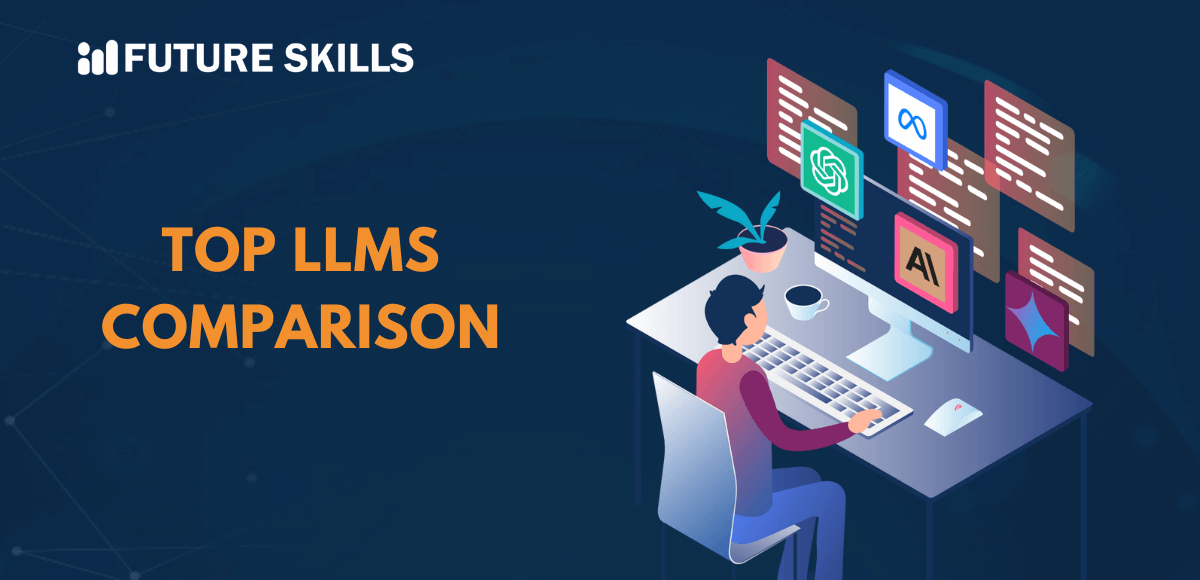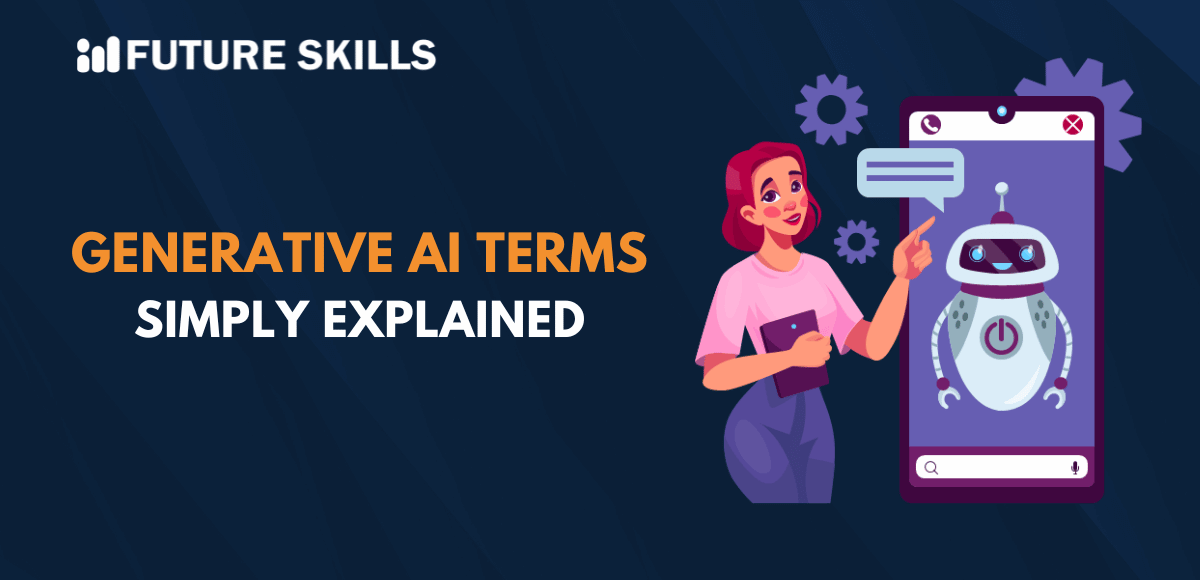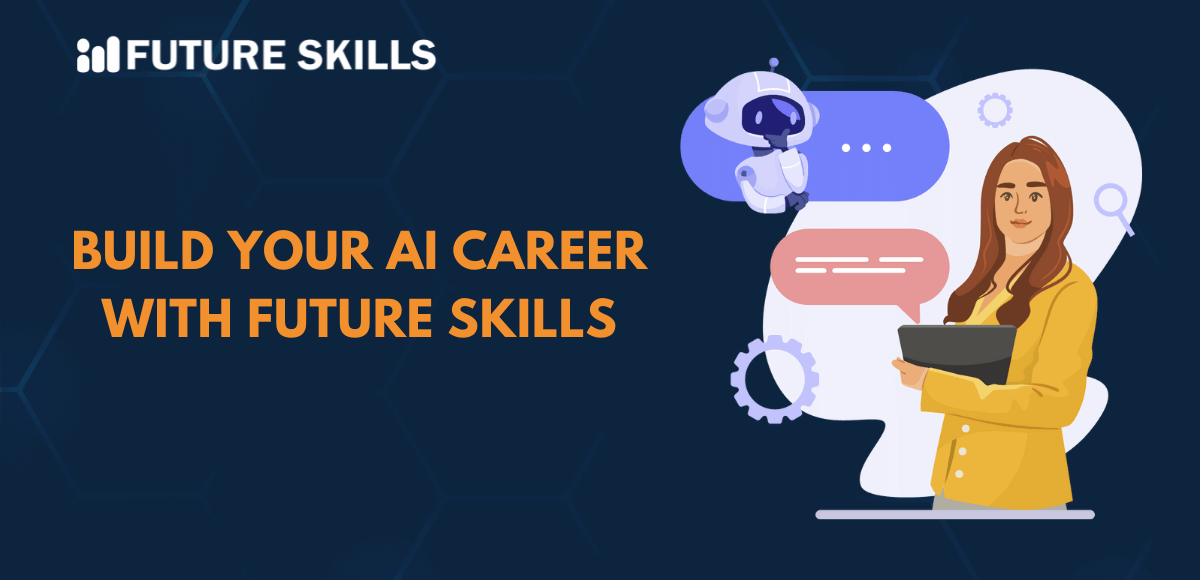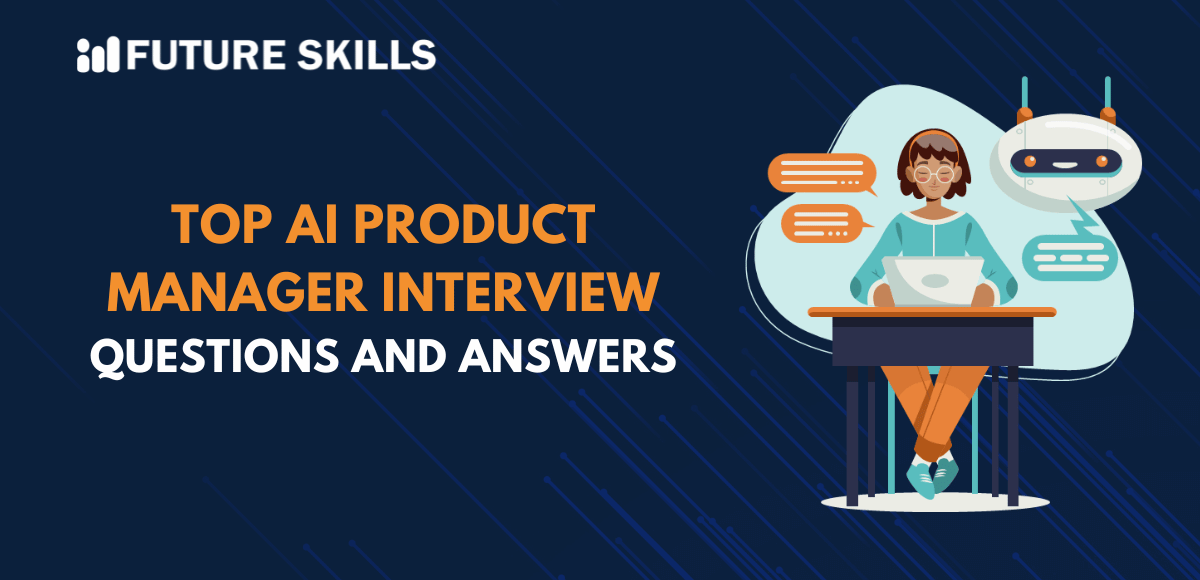Large language models, or LLMs, have been the driving force behind the growth of generative AI. LLMs use a combination of machine learning, deep learning, and natural language processing to help machines learn how to understand and respond to queries in human language. One of the notable examples of applications of LLMs is ChatGPT, which uses the transformer model.
Constant developments in the domain of LLMs have encouraged discussions about a top LLMs comparison to identify the best pick among LLMs. The participation of industry giants such as Meta, OpenAI, and Google has fuelled the growth of the LLM ecosystem. At the same time, the competition between innovative solutions created by different tech giants and AI startups has caught the attention of the LLM community. Let us discover why it is important to learn about LLMs and compare some of the top players in the LLM market.
Discover the fundamentals of Large Language Models and techniques of prompt engineering with Certified Prompt Engineering Expert (CPEE)™ course and learn how to guide LLMs to get the desired output.
Why Should You Learn about LLMs?
Large Language Models, or LLMs, are one of the most popular foundation models that use large amounts of data in their training dataset to serve multiple applications and tasks. LLMs have led to innovative advancements in the domain of generative AI. The search for answers to queries like “Which LLM is the best?” would be difficult as LLMs have evolved with new capabilities. For example, LLMs with multimodal capabilities can transform the ways in which people interact with machines to extract information.
Large Language Models work by utilizing deep learning techniques that help them leverage multiple neural network layers. The different layers have parameters that you can fine-tune during the training process. Some of the most common applications of LLMs include text generation, code generation, content summarization, language translation, and sentiment analysis.
The impact of LLMs would be visible in almost every industry, including financial services, healthcare, human resources, and insurance. Therefore, they have gained more popularity in recent times by providing better accuracy and intelligent collection of information about context. A comparison between the top LLMs can help you choose the ideal models that fit your requirements.
Comparison of Top Large Language Models in 2024
The rise of LLMs has served as a major highlight in the AI ecosystem. However, an LLM comparison table is essential for a comprehensive review of LLMs to ensure that you choose LLMs for enterprise-level applications. In-depth validation processes for choosing LLMs can help businesses avoid the risks of reputational damage or liability.
As of now, the outline of top LLMs includes names such as ChatGPT, Gemini, Claude, Llama, and Mistral. Here is a comparison between these LLMs based on different factors.
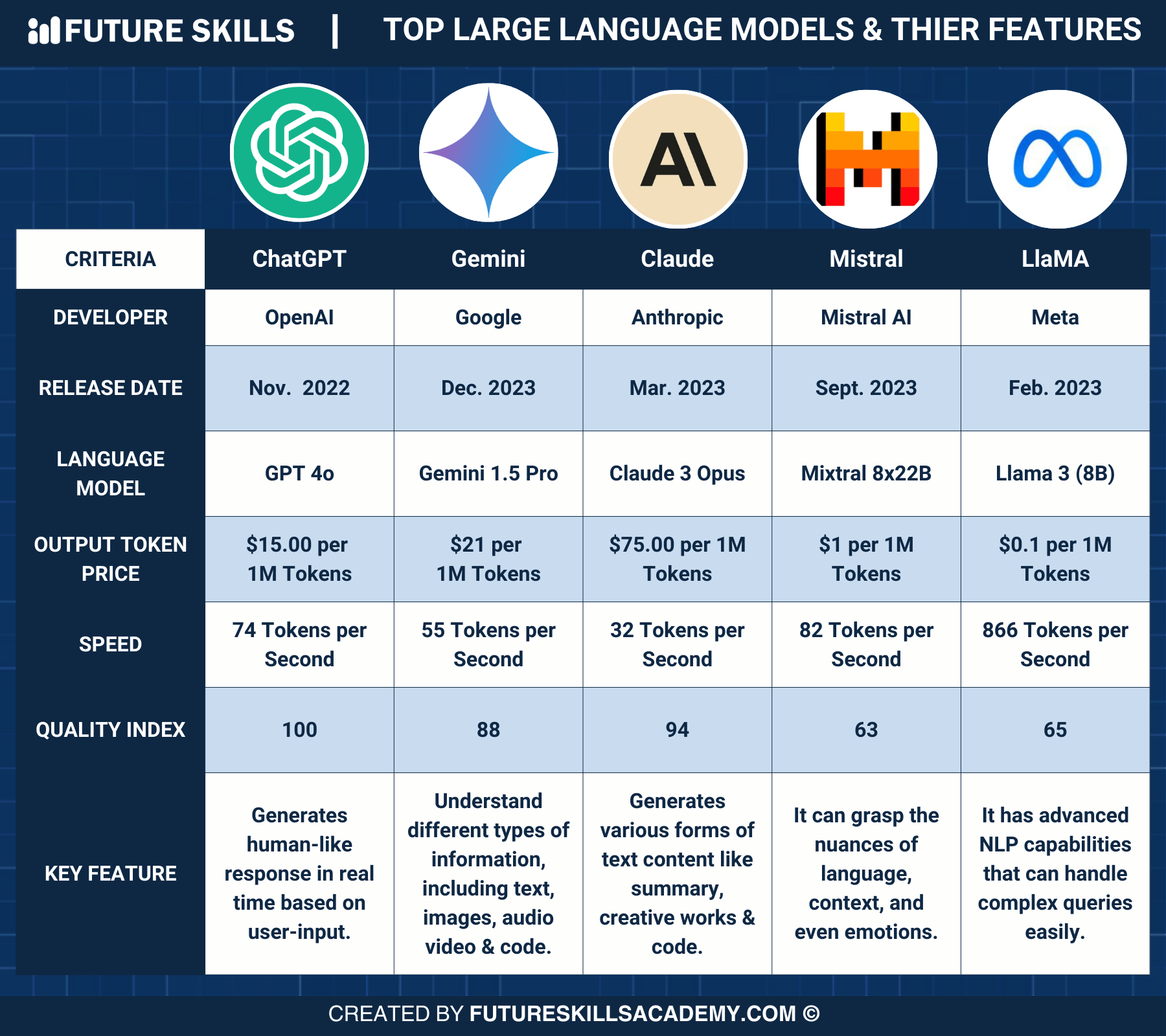
-
Developer Team
The foremost factor that you must consider when evaluating the difference between large language models is the developer team. It helps you measure the credibility of the LLM for different use cases. ChatGPT was developed by OpenAI and is an integral part of Microsoft.
Gemini has been developed by Google, which is one of the biggest tech companies in the world.
Claude has been created by Anthropic, a prominent AI startup committed to development of reliable, customizable, and interpretable AI systems.
The developer team behind Mistral is Mistral AI, a popular French startup that has been pushing boundaries in generative AI with open-source and commercial LLMs.
Llama is created by Meta, which is leading innovation in the domain of AI with active initiatives. The involvement of Meta in creating an LLM elevates the credibility of Llama.
-
Release Date
The next crucial highlight in any outline of top LLMs comparison points is the release date. Older LLMs are likely to have evolved with advanced and innovative features, while new models may bring some creative functionalities to the table.
ChatGPT is the oldest player on the table, as it was introduced in November 2022. Meta introduced Llama in February 2023, while Anthropic launched Claude in March 2023. Mistral AI came up with Mistral in September 2023, and Google launched Gemini in December 2023.
-
Language Model
The core feature of an LLM is the model empowering it. You can find the answer to “Which LLM is the best” by identifying the quality of the language model that powers them. ChatGPT runs on GPT-4 Turbo, while Llama runs on Llama 3. Mistral uses the Mistral 8x22B language model. On the other hand, Gemini and Claude use their eponymous language models.
-
Price of Output Tokens
The next important highlight in any comparison between LLMs is the price of output tokens. It is an important factor for defining the cost-effectiveness of different large language models or LLMs. The output token price shows how much you would have to spend to generate tokens from LLMs. You can find a major difference between large language models by finding out the cost of generating one million tokens.
ChatGPT is probably the costliest model among LLMs, and it requires $30 for 1 million tokens. The next LLM in terms of pricing is Claude, which needs $24 for 1 million tokens. Gemini has an output token price of $21 for 1 million tokens. Mistral and Llama are the most cost-effective LLMs as they charge $1.20 and $0.95, respectively, for 1 million tokens.
-
Speed of Language Models
Another notable aspect of a comparison between large language models and LLMs is their speed. The speed of LLMs is one of the foremost determinants of their efficiency in addressing different tasks. An LLM comparison table for enterprise-level applications must focus on speed as it helps determine whether an LLM can scale up to the evolving project requirements. However, it is important to note that speed is not the only determinant of the quality and performance of LLMs.
ChatGPT has a transaction speed of 22 tokens per second. Google Gemini offers a transaction speed of 44 tokens per second. Mistral has a speed of 82 tokens per second, while Claude has a speed of 153 tokens per second. Llama by Meta leads the chart with a speed of 866 tokens per second.
-
Quality Index
The most crucial factor that can help you differentiate between different LLMs is the quality index. It is an important highlight for top LLMs comparison as the quality index serves a clear impression of the quality of output they generate. The quality index of LLMs is determined by evaluating their performance on the basis of different factors and benchmarks.
The only LLMs in the comparison that score 100 are ChatGPT and Claude. Google Gemini scores 88 on the quality index, and Mistral scores 83 on the quality index. Llama by Meta is at the bottom of the comparison with a quality index of 58.
-
Distinctive Feature
You can find ‘which LLM is the best’ by comparing the distinctive features of each LLM. The distinctive feature shows why you should use a large language model for a particular task.
ChatGPT has the distinctive feature of generating real-time responses to user queries in natural language.
The key feature of Google Gemini is its ability to understand different types of data, such as text, audio, video, code, and images.
Claude comes with a special feature for generating different forms of text content, such as summaries, code, and creative tasks.
Mistral AI is known for its ability to understand the intricacies of natural language, emotions, and context.
Llama stands out as the top choice among LLMs in this comparison for its advanced NLP capabilities that support easier management of complex queries.
Familiarize yourself with the best practices for implementing AI and fintech solutions. Take the AI and Fintech Course and uncover the power of AI and Fintech combined.
How Should You Choose Large Language Models?
The selection of an ideal LLM depends on clear identification of the use case. You must also expand an LLM comparison table with many other factors to make the ideal choice. It is important to maintain the right balance between choosing a powerful model and a less efficient model. Some of the other factors that you should take into account for choosing LLMs include the following,
-
Context Window
It refers to the number of tokens that an LLM considers for the prediction of a specific token alongside the sequence of text.
-
Parameter Size
The parameter size showcases the number of parameters that an LLM can learn to expand its knowledge.
-
Customization
The most crucial highlight in any LLM comparison table must be the flexibility for customization. You must find out whether you can customize an LLM according to your purpose.
-
Licensing
Licensing is also an important aspect in determining the ideal LLM for a specific use case. It ensures safeguards for intellectual property rights alongside supporting commercialization and also guarantees ethical usage.
Final Words
The comparison of the top LLMs in the market shows that every LLM has a distinct set of positive aspects. For example, ChatGPT stands out with a powerful GPT-4 Turbo language model and a quality index of 100. On the other side of the top LLMs comparison, Llama by Meta offers the lowest output token price at $0.95 for 1 million tokens. However, the good thing about LLMs is the scope for continuous improvement, thereby ensuring possibilities for the introduction of advanced features. Discover more about the working mechanism of large language models and compare the top players to find the best pick right now.

